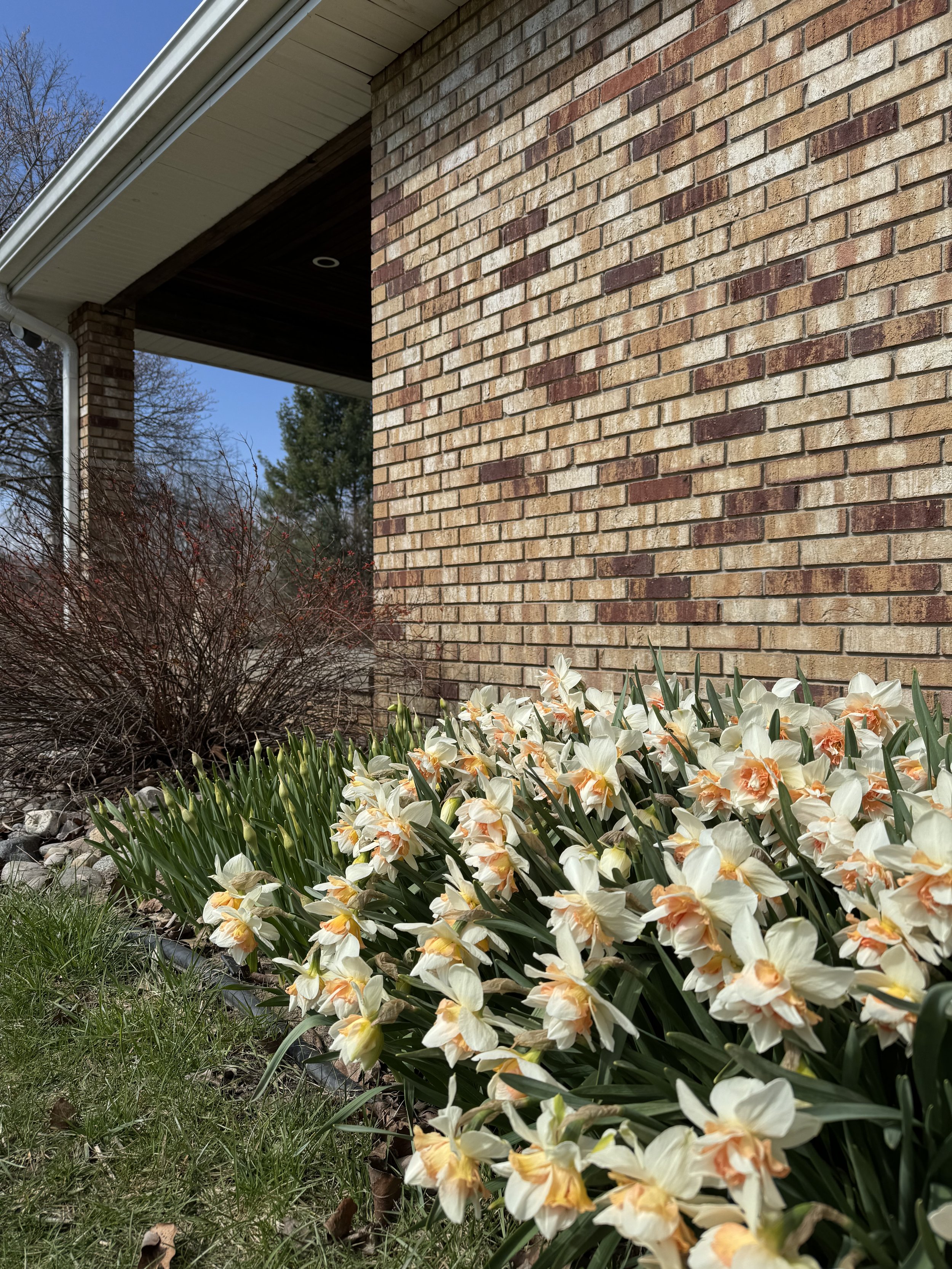How to Grow Daffodils (Narcissus) and Why They Deserve a Spot in Every Garden
When I first started growing flowers, I thought daffodils were… fine. Bright yellow, trumpet-shaped, maybe a cheerful sign that spring was on the way. But nothing I’d get overly excited about.
Turns out, I was wrong. So wrong.
Because daffodils are so much more than that. They’re one of the most underrated flowers in the garden world—and today, I’m going to show you why they deserve way more love (and space) in your yard.
More Than Just Yellow
Most people picture daffodils as those loud, neon-yellow blooms planted in city parks or sold in tight grocery store bunches. But there’s an entire world of varieties beyond that: soft creams, blush tones, ruffled petals, and delicate fragrances that stop you in your tracks. Some bloom early, others late.
Once you start exploring different daffodils, it’s hard not to get hooked.
Why I Always Make Room for Daffodils
There’s just something about seeing daffodils pop up after a long, gray winter. They’re often the first bloom to show, and they instantly change the mood of a space—like nature’s way of saying, “You made it through.”
But they’re not just pretty. They’re smart garden choices. Daffodils are deer- and rodent-resistant (unlike tulips, which tend to be gourmet snacks). They multiply on their own, require zero digging or dividing for years, and once their foliage dies back, you can plant right over them making them a dream for busy gardeners.
When (and Why) to Plant Them
You’ll want to plant daffodils in the fall—ideally a month or so before the ground freezes. Planting earlier gives the bulbs time to establish roots before winter.
If you're in a colder zone, aim for early to mid-fall. In warmer zones, you can push it a bit later, but the goal is always to give them a head start underground. Come spring, they’ll be the first to reward you.
Planting Basics (Nothing Complicated Here)
Daffodils like full sun and well-draining soil. Dig a hole about two to three times the height of the bulb, pointy side up (don’t stress if you get it wrong—they’ll sort themselves out). That’s really it. Once they’re in the ground, you can forget about them until spring.
Don’t shy away from planting along tree lines or spots that are shaded later in the season. Daffodils bloom early—well before most trees leaf out—so they’ll still get plenty of light when they need it most.
Pro tip: mark where you planted them because if you’re like me…you won’t remember!
Yes, You Can Use Them in Bouquets
Daffodils aren’t just for garden admiring—they work beautifully as cut flowers too.
The trick is knowing when and how to harvest. For the longest vase life, harvest when the buds are just starting to crack open.
The ideal harvest stage to maximize vase life.
And here's the big thing: daffodils release a gooey sap that can damage other flowers, so you'll want to let them sit in water alone for a few hours before adding them to a mixed arrangement. With every recut of the stem, they will again need to sit in water.
But once conditioned, they’re sturdy, cheerful, and long-lasting in the vase.
Here’s what happens in a bouquet when daffodils aren’t conditioned properly vs. when they are.
My Top Varieties
There are so many beautiful daffodils out there, but a few I always come back to are: Delnashaugh – An early-blooming stunner with peachy and white double blooms that always get compliments.
Daffodil Delnashaugh
Sir Winston Churchill – Each stem typically bears 3–4 small white blooms with soft yellow centers, each about 1½″ wide but the fragrance of this one is incredible. (If I could tape a flower to my nose and smell it all day…this would be the one!)
Daffodil Sir Winston Churchill
Apricot Whirl – Layers of ruffled petals in the most stunning shades of apricot and cream. The color alone makes this one a standout.
Daffodil Apricot Whirl
Final Thoughts: Go All In on Daffodils
If you're someone who loves to grow flowers—whether you're new to gardening or looking to simplify what you already do—daffodils are a perfect addition. They're easy. They’re beautiful. And they’re often the first reminder that warmer days are ahead.
Plant a few this fall (or a few dozen—I won’t judge), and you’ll be glad you did when spring rolls around.
Want to Grow Even More Flowers Without the Fuss?
If daffodils got you dreaming about a full-on flower garden, you’ll love Cut Flowers 101. It’s my no-fuss guide that walks you through everything from starting seeds to harvesting incredible blooms—without needing a farm or fancy setup. 👉 Click here to check it out »












